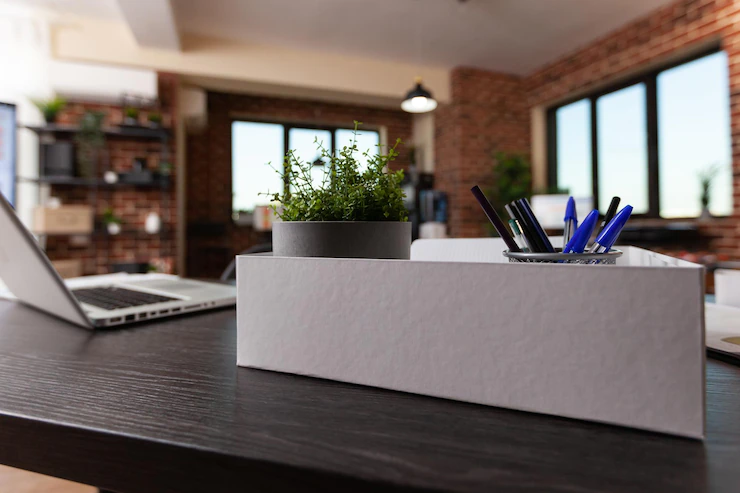Have you ever felt like your desk wasn’t quite meeting your needs? Do you wish it was just a little different so that you could use it more effectively and efficiently? Perhaps you’d love to have a desk that’s custom-tailored to the way that you work.
But how can you achieve something like this? There are plenty of options, but if you want to adjust an existing piece of furniture, the easiest option is to build one yourself. If you’re planning to build a desk or have an existing desk that you’d like to customize, here are ways to customize a modern desk.
Here Are Five Ways In Which You Can Customize A Modern Desk:

1. Choose The Right Shape
The shape is one of the first things to decide when customizing your desk. You may prefer a defined rectangular shape or something more unique, such as an L-shaped desk.
The main thing to remember when choosing the shape of your desk is the amount of space available in your office or home office. If you have a smaller room, an L-shaped desk will allow you to fit in more furniture while still leaving you space to walk and work comfortably.
2. Add Your Desired Features
Next, consider the features you’d like to have on your desk. Do you want a place to store your keyboard or your computer monitor? What about drawers? Keyboard trays are a great addition to an office desk, allowing you to type while sitting in a comfortable position.
If you work with a lot of documents, you might love the idea of adding a file drawer. You want your desk to be as functional as possible; to do that, it needs to be well-suited to your needs. Desk drawers are an excellent tool for increasing the desk’s functionality.
3. Choose A Suitable Material
After you’ve specified the shape and features you’d like on your desk, you can focus on the material it’s made from. There are many different options, each with unique benefits, so choosing one that suits your needs is essential.
Here are some of the most common materials you’ll find in desks:
- Metal: The most common type of desk is made from metal, usually aluminum or steel. These desks are durable and easy to clean but tend to be heavy and cold.
- Wood: A timeless classic that offers a warm, natural aesthetic. Wood is also easy to maintain and can be customized with stains or paints to match your office’s decor.
- Glass: Glass desks are popular because they look great and are easy to clean. They’re also a good choice if you want a modern-looking desk that won’t clash with other furniture in your office. However, glass desks can be heavy, scratch easily, and aren’t very durable.
So it’s worth researching to find material that’s right for you.
4. Pick A Style
One of the final things to consider when customizing a modern desk is the style. The two main styles of desks are modern and traditional. Modern desks are sleek, clean, and minimalist, with sleek lines and a lack of ornamentation. Traditional desks are more whimsical and often feature ornate carvings, ornate legs, and decorative panels.
5. Choosing The Color Of Your Desk.
The color you choose should complement, not clash with, the other colors in the room. Colors that clash creates a harsh, unpleasant look. You’ll feel energized and ready to work if your workspace is inviting.
Summary
Make sure your office is functional, good-looking, and comfortable. The game of business is most effectively played with a well-designed workspace that fits the needs of its occupant. If you can find a desk that allows you to do more, that is an asset to your business.
Read Also






















